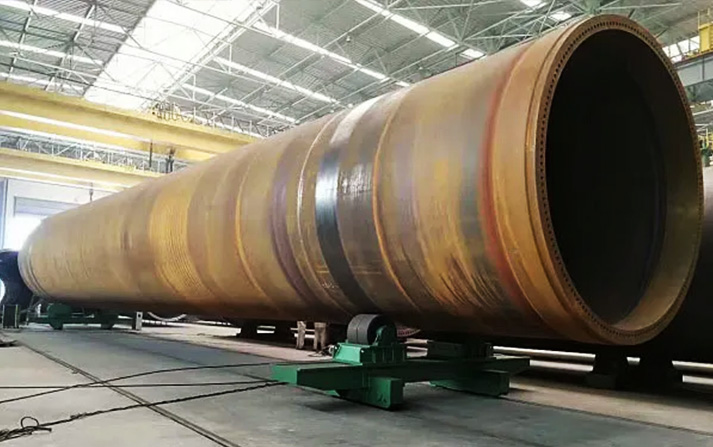

Common types of anti-channeling tank welding rotators:1. Jacking transmission device
The jacking transmission device is a mechanism that performs lifting and lowering movements through one side of the driven roller frame to stagger the axis of the welded object and change the axial component of the ground caused by the dead weight of the welded object. This type of anti-channeling welded roller frame has the advantage of high adjustment sensitivity and can achieve more accurate axial adjustment. However, due to its high manufacturing cost and large volume, it is usually suitable for welding processes that require high adjustment sensitivity.
2. Offset actuator
The offset actuator changes the axial friction component between the roller frame and the welding object by causing the rollers on both sides of the driven roller frame to shift in the same direction along the vertical centerline. This adjustment method has the advantage of high adjustment sensitivity and can accurately adjust the axial position. However, there may be a problem of excessive roller wear, as the offset may cause increased friction, thereby increasing roller wear.
3. Translational actuator
The translational actuator achieves the purpose of adjusting the axis of the weldment and the angle of the roller axis by making the rollers on both sides of the driven roller frame move horizontally perpendicular to the axis of the weldment at the same time. This adjustment method has the advantages of good stability, low manufacturing cost, simple structure, and does not occupy additional space. This type of anti-channeling welded roller frame is suitable for scenarios that require good stability and relatively low manufacturing costs.
Customization process of anti-channeling tank welding rotator:1. Customer demand analysis: Manufacturers conduct in-depth communication with customers to understand their specific needs and engineering requirements. Including but not limited to: the type, size and shape of the workpiece; the requirements of the welding process, such as welding speed, welding materials, etc.; the specific requirements for the anti-channeling function, whether a special adjustment mechanism or automatic centering function is needed; environmental factors, such as Working temperature, humidity, etc.
2. Design stage: Based on the demand analysis, the design team began to formulate a design plan for the anti-channeling welded roller frame. This includes mechanism design, selecting appropriate actuators, such as jacking transmissions, offset actuators, translation actuators, etc.; structural design, determining the number, size, material, support structure, etc. of rollers; automation function design, if If necessary, design automatic centering function, etc.
3. Manufacturing and assembly stage: After the design plan is determined, the manufacturing team begins to manufacture and assemble the anti-channeling welded roller frame. Including material procurement, purchasing required metal materials, hydraulic components, electrical components, etc.; manufacturing, performing machining, welding, painting and other processes; assembly, assembling various components into a complete roller frame.
4. Testing and debugging stage: After completing manufacturing and assembly, test and debug the anti-channeling welded roller frame to ensure that its performance and function meet the design requirements. Tests include: mechanical testing to check the rotation of the rollers, sensitivity of the adjustment mechanism, etc.; hydraulic testing to check the working stability of the hydraulic system; automated function testing: if there is an automatic centering function, perform an alignment test.
5. Delivery and after-sales stage: After passing the test and debugging, the anti-channeling welded roller frame will be delivered to the customer. At the same time, relevant training is provided to ensure that customers can operate and maintain equipment correctly and safely. The manufacturer provides after-sales service. In order to ensure the long-term and stable operation of the equipment, the manufacturer develops regular maintenance plans; when customers encounter problems during use, they provide remote or on-site technical support to ensure that customers can obtain the required parts in a timely manner.


